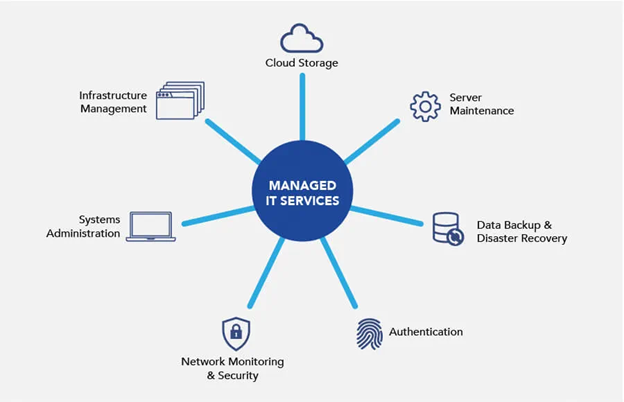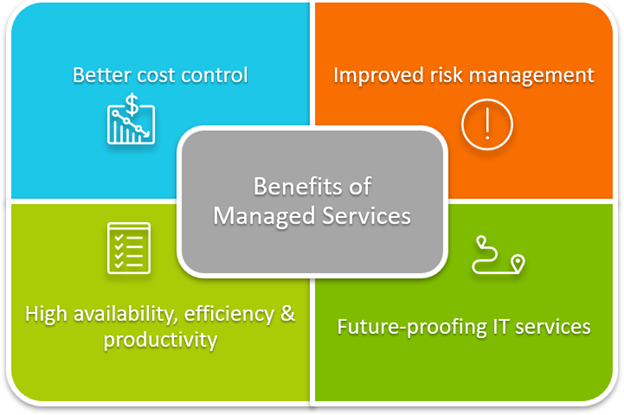
Managed IT services involve entrusting a Managed Service Provider (MSP) with the outsourcing of diverse IT tasks and duties. These encompass a broad spectrum of IT functions such as network monitoring, cybersecurity, data backup and recovery, software updates and patches, help desk support, and beyond. They play a critical role in ensuring that your technology ecosystem is up and running, optimized, secure, and updated to the latest advancements.
Why Are Managed Service Providers Important?
There are various types of managed IT service solutions, all designed to shift the responsibility of IT maintenance from the client to the service provider. Effective managed services relationships offer customers predictable pricing and allows them to focus on core business challenges rather than IT management tasks.
Under a service level agreement (SLA), the managed service provider (MSP) is responsible for the performance of the managed service or equipment. The SLA outlines the services provided, criteria for evaluating service delivery success, and provisions for handling outages, recovery procedures, technical support, and help desk activities. Typically, the user pays a monthly subscription fee, though quarterly or yearly contracts are also available.
By outsourcing the maintenance and management of IT needs, businesses can enhance operations, reduce costs, and simplify IT administration across various processes and tasks.

